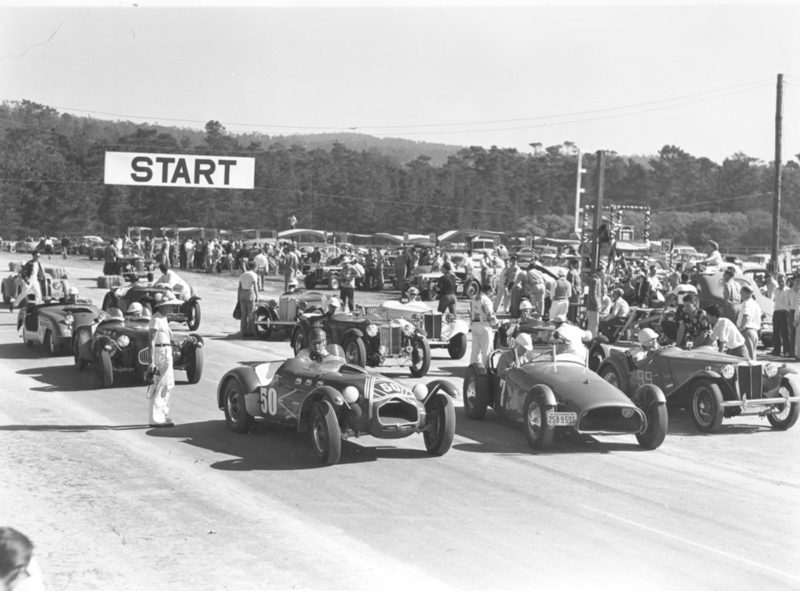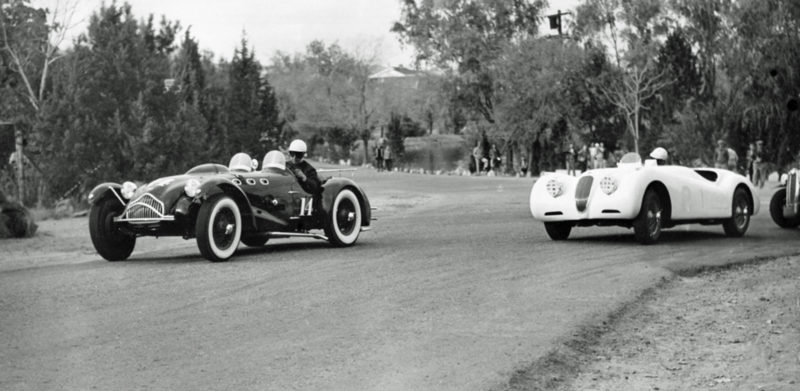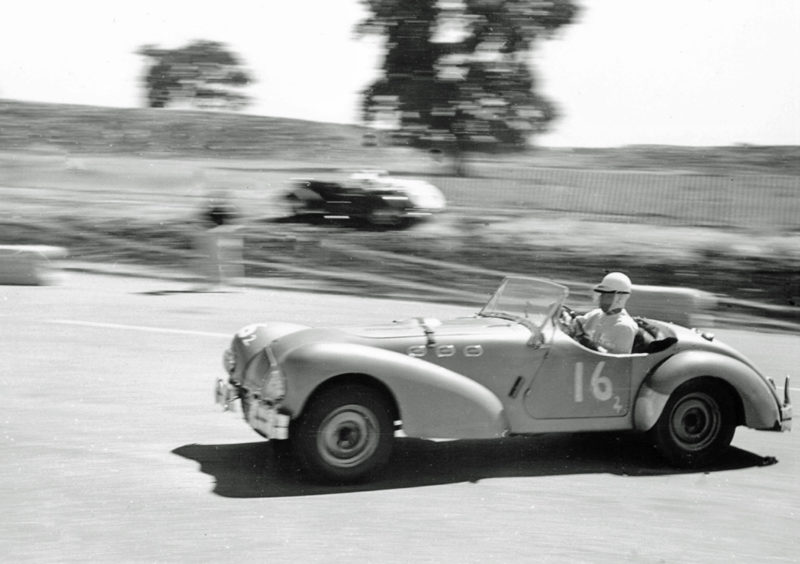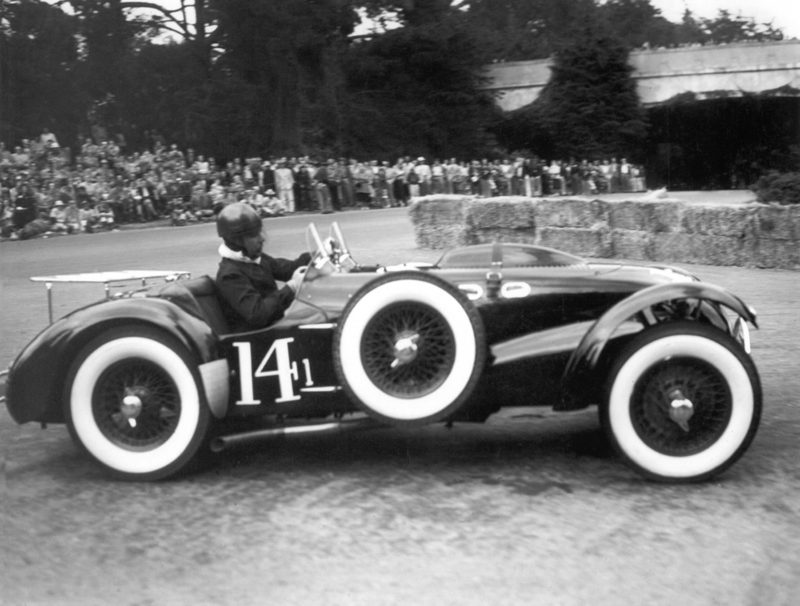Notes From The Archives – The Allard
January 24, 2019
The Allard
Words by: Gary Horstkorta – December 2018
Cover Photo: Tom Frisbey at Palm Springs 1950
In 1937, Sydney Allard introduced his first production car powered by a flathead V8 Ford engine. Unfortunately, just as the production of this car was ramping up, W W II broke out and Allard turned to servicing military vehicles until 1945. By 1946, Allard was again in the car building business, introducing three new models, the K1, L and J1 which were basically the same car with variances in dimension and seating capacity.
Since Sydney Allard had been very successful in hill climb competition prior to the war, his interest in competition continued post war with the K1 model. Allard was no slouch at racing, he won awards in 71 of 75 hill climb events he entered over at three year period pre-W W II and placed third in the 1950 24 Hours of Le Mans in what else, an Allard.

Michael Graham on pole with Basil Panzer behind at Pebble Beach 1950
Many of the K1 Allards would be equipped with ARDUN overhead valve conversions as its creator, Zora Arkus-Duntov was employed by Allard. Duntov served as a technical advisor and works driver before leaving for the US and Chevrolet. He continued racing Allards at Watkins Glen, Palm Beach, Turner AFB, Suffolk Airport in the U.S. and at Goodwood and the Le Mans 24 Hours overseas through 1953.
In 1949 Allard introduced the car which became one of his best sellers and the model best known in the U.S., the J-2. The first J-2 to arrive in the U.S. was imported by ex-pat British sportsman, Tom Cole. The son of a wealthy shipping company owner, Cole had come to the U.S. with his family in 1939. He attended Harvard for one year before serving in the Merchant Marine and as an ambulance driver during the war. Returning home, he became involved in the post-war sports car racing scene in the east, first with an HRG and Jaguar SS-100, with some success.

Harry Fair finishes his race at Buchanan Field 1951
With a desire for a faster car, Cole imported an Allard, stuffed a Cadillac V8 into the chassis, becoming the first to do so and also a decade before Carroll Shelby put a V8 into the AC to create the Cobra. Cole experienced varying degrees of success with his hybrid race car but broke through in May 1950 with a class win at the Suffolk Airport race. His first major overall victory was at Bridgehampton in June which prompted Sydney Allard to invite Cole to co-drive with him at Le Mans. As mentioned earlier, they finished third overall.

Bill Pollack leads Phil Hill at Reno in 1952
Word of the Allard’s success on the east coast quickly made its way to the west coast were Al Moss brought in the first Allards in 1950 as the West Coast Distributor. The car was a K model two-seater and while the car was in transit from the UK, Moss had his friend Vic Edelbrock build up a Mercury flathead V8. The engine was installed in time for the first Palm Springs races and the car lead the main event driven by Moss’s sales manager Tom Frisbey. Unfortunately the engine overheated but the cars potential was noticed by quite a few others.

Regional Executive Harry Fair chose an Allard K-2 to race.
A newer J-2 model with Cadillac V8 arrived at Moss’s dealership and was entered in the 1950 Pebble Beach races with Michael Graham in the drivers seat. Graham won the Monterey Cup handily and finished fourth in the Pebble Beach Cup race. The following year, two J-2s were entered at Pebble Beach by Jack Armstrong and Bill Pollack who won the Pebble Beach Cup. Pollack again made headlines in 1952 when he won the first Golden Gate Park races in Tom Carsten’s Allard Cadillac. This Allard is perhaps the best known J-2 of all with its white side-wall tires, luggage rack, spare tire and shiny black paint, not a combination you generally see on a winning race car. At their peak, there were six Allards entered at Pebble Beach in 1952 and 1953 but times were changing.

Pollack on way to victory – GGP 1952
Unfortunately for Allard, Jaguar, Ferrari, Aston Martin and a number of specials began to take over with their better handling and horsepower. By the mid-1950’s, it was hard to find an Allard running up front in road races across the U.S. However, by the early 1960’s another British car with an American V8 engine would begin to make its mark on U.S. road courses and eventually in Europe…the Cobra.
